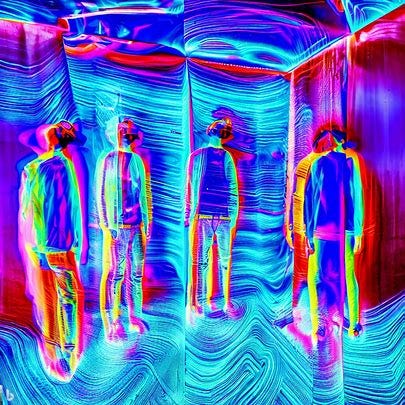The views expressed in this blog are entirely my own and do not necessarily represent the views of the Department of Energy or the United States Government.
I recently changed jobs! I’ve transitioned away from working directly on AI to focus on energy supply chains at the Department of Energy (via ORISE). If you’d like to read more about that transition, you can do so here:
In any case, I wanted to use this space to cover another AI x Science trend I’ve noticed that I wanted to aggregate and highlight.
Finding Signal in the Noise
Our world is bathed in a variety of signals and spectrums: acoustic, electromagnetic, chemical. The increasing digitization of data, commoditization of advanced sensors, and the use of AI to parse through complexity in search of signal, is allowing for increasingly clever ways of uncovering patterns in noise, with implications for privacy and communication. This is my living repository of some creative ways of finding signal.
Acoustic
🗣️Digital voiceprinting: is someone’s voice a unique fingerprint? (a bit skeptical, as it gives me graphology vibes i.e. human personality from signatures, but I don’t know enough to judge its validity)
Some of the most creative analyses in terms of extracting signal from noise are cybersecurity researchers who work on side-channel attacks e.g.
☎️ Using phone vibrations or computer fans from air-gapped devices
🔴Using infrared lasers to input commands into smart home speakers like Alexa
Electromagnetic
🧍Using AI to estimate human pose from Wifi, with obvious implications for surveillance e.g. tracking someone in a crowded mall using ubiquitous Wifi or special operations e.g. knowing what position everyone is standing or sitting in inside of a room
🌡️We can remotely sense temperature through high-precision timestamps associated with interet packets.
Biological
🧬🧑Environmental DNA: everyone is shedding microscopic amounts of DNA everywhere they go. Researchers are increasingly able to extract population-scale and individual-scale information, with surveillance implications. Funny enough, it originally originated from environmental sciences trying to study animal populations and movements
🧬 Finding the Golden State Killer: well-reported already but still worth emphasizing how biological information is a commons problem and just because you haven’t played into the system, doesn’t mean the system isn’t playing with you. Pretty incredible the inferences we can make once we hit critical mass of population-scale data c.f. China
🧬🌾Fingerprinting agricultural products for supply chain integrity: using microscopic DNA strands as “physically unclonable functions” to verify the authenticity of seeds, cotton products, etc which is just the physically instantiated version of public key encryption from cybersecurity [NYT]
🌱plants as surveillance: DARPA program exploring using plants as chemical sensors e.g. nuclear non-proliferation, chemical warfare. Benefits include that plants can be easily inserted via seed drops, blend in as sensors with actual plants, and can provide detection signals easily e.g. through dying, leaf color change, etc
Unrelatedly, I just want to say plants are very cool. They have a variety of signalling and networking mechanisms that we barely understand to communicate with another and not enough has been done to explore these abilities. They scream in ultrasound, communicate through the emission of volatile organic compounds, and have networks of fungi connecting them to each other in unknown ways. Also, we can use certain plants to mine for critical minerals aka phytomining.
Thanks for Reading!
I hope you’re as excited as I am about the future of machine learning for solving exciting problems in science. You can find the archive of all past issues here and click here to subscribe to the newsletter.
Have any questions, feedback, or suggestions for articles? Contact me at ml4science@gmail.com or on most platforms as @charlesxjyang



